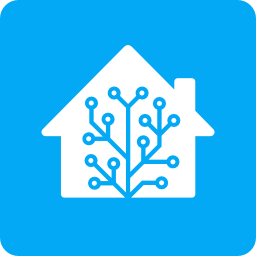- 2 Posts
- 34 Comments
I’m using a mm wave sensor for a similar purpose and it works well. I don’t use it as an on trigger. I use it to help decide when to turn lights off.
For a cheap or free solution, you could detect when your TV is on (Chromecast integration, home kit TV integration, etc. or power monitoring smart plug) and don’t turn off the lights if the TV is on.

 2·6 days ago
2·6 days agoThe VPN part is tough to answer since it depends on the music service and VPN exit IP. You may find the VPN is fine if you use another exit node.

 1·8 days ago
1·8 days agoMy server is only available on my LAN and via a VPN. Is fail2ban applicable? Or is it mainly for public facing servers?

 3·9 days ago
3·9 days agoI view podman as a mostly drop in replacement for docker but it doesn’t have a daemon (for better and worse). I wouldn’t recommend using podman for you right now. I’d strongly recommend docker-compose (not docker run).
If you’re ever stuck trying to convert a docker run command to a compose.yml file, composerize.com is helpful.

 42·9 days ago
42·9 days agoI have about 20 services on my machine so I’m going to need to open a ton of ports (ssh, SSL, multiple higher number ports since some services require several ports). At that point, what is the point of a firewall if so many ports are open? With so many ports open, it seems like a firewall doesn’t add much security vs the complexity it adds.

 8·10 days ago
8·10 days agoI had a similar journey and recommend it. I started with Open Media Vault with docker containers configured via a GUI, then to Debian + docker compose, then to Debian deployed with Ansible + docker compose, and now I’m with NixOS + podman compose. The first jump to Debian was the most intimidating for me learning CLI commands for the first time and not having defaults chosen for me, but it was liberating to finally learn the actual tools and not just learn a GUI abstraction for tools.

 5·20 days ago
5·20 days agoI’ve seen some interesting development with Music Assistant but I haven’t personally used it. It’s not sure if it can be commanded using the cast button.
I agree with starting with what you have to get learning, but I wouldn’t run a Minecraft server on this machine. I’d start with everything else and then buy an old office machine to upgrade. It depends on the unit, but they are easy to upgrade basic upgrades like adding RAM, storage, and possibly a low power graphics card. Since most servers are always on, keep an eye on power consumption with a power meter.

 7·30 days ago
7·30 days agoMost carriers know your name, your internet usage metadata, and your location all the time using cell tower triangulation. There have been multiple reports of phone providers selling location data and sercurity breaches. If you have a phone that provides MAC address randomization and you use a VPN then I think using public WiFi is more private than having your mobile data turned on all the time.

 4·1 month ago
4·1 month agoI have my phone on airplane most of the time and use Wi-Fi with VoIP for calls and SMS. If I need mobile data, I have a Silent Link eSIM for mobile data only. If you ever need to make an emergency call you don’t need a sim card or provider, emergency calls always work. While the main motivation is privacy, it’s nice that it olny costs about $3 per month on average.
What is the battery life?
As another solution, you could try Tuta Calendar. It’s not self hosted, but is free for one calendar. You will be able to access their WebUI and they have clients you can download too.
I hadn’t looked too much into Radicale, so thanks for the info. What is their second webUI you mentioned called? If you’re looking for an all in one server, Nextcloud may be your best option. Its a bit heavier though for just contacts and calendar. If you do go down this path, I’ve heard the docker AIO container is easier to maintain.
I briefly looked into the web client, and I don’t think it’s worth trying to self-host. There isn’t a docker image and the latest release on github is from 2020. If you need a web UI, I’d recommend using something else.
If you’d like a web UI too, Radicale may be a better fit and easier to set up. I tried it out briefly using docker compose.
I use the same etesync clients but link them to your own server, called etebase. There are a couple setup examples in the code, but if you’d like, I can share my docker/podman compose stack.
I haven’t set up the web UI to directly access items since I’m fine just using clients to sync and access items, so I haven’t looked into the web UI.
It’s not too hard to self-host too.

 2·2 months ago
2·2 months agoI assume it was the pound symbols so I removed them.

TIL what a tankie is and that lemmy.ml is politically biased. I pretty much just keep to my subscribed communities.